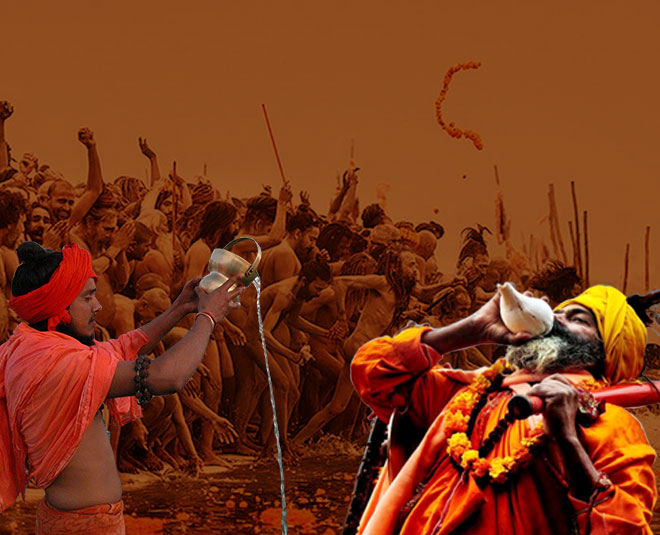
Do You Know The Significance Of Kumbh Mela?
India is a land of fairs or melas with so many events happening all the year round. There’s the Pushkar Mela, Gangasagar Mela, Baneshwar Mela, Ambubasi Mela, Chandrabhaga Mela, Kolayat Mela, Hemis Gompa Fair and then there’s the mother of all melas – the Kumbh Mela. This mass Hindu pilgrimage takes places in different places and the traditionally recognised ones include the Prayagraj Kumbh Mela, Haridwar Kumbh Mela, the Nashik-Trimbakeshwar Simhastha, and Ujjain Simhastha. But do you know the story behind the Kumbha Mela? Read on too find out.
The Myth Behind The Mela

Image Courtesy: www.pinterest.com
As per the puranas, Kumbha was the pot of amrit or drink of immortality which caused a fight between devtas and asuras, who used to jointly produce it earlier through a process called Samudra Manthan or churning of the milk ocean. With the Mandara Mountain as the churning rod and Vasuki, the Serpent King, as the rope, the first round of churning produced poison which was consumed by Lord Shiva and other creatures such as snakes and scorpions. Then the Mandara Mountain started sinking in the ocean and to support it, Lord Vishnu supported it by taking the form of a tortoise. Finally, Dhanvantari, the god of medicine, emerged with the Kumbh of amrit after 1000 years which was snatched by the devtas as they were scared that the asuras will misuse its power. This started a chase and fighting that went on for 12 days and 12 nights. It was during this time that Lord Vishnu spilled a few drops from the kumbha in four places. These are the places where the Kumbha Mela is held one by one every 12 years depending on zodiac positions of the Sun, Moon and Jupiter.
Don’t Miss This: Here's All You Need To Know About The Significance And Rituals Behind Govardhan Puja
But Why 12 Years?

Since 12 days of Gods are equal to 12 years for mankind! So that’s why after every 12 years, people take a ritualistic bath and undertake ceremonies to cleanse themselves of all the sins at banks of Godavari river (Nasik), Ganga river (Haridwar), Kshipra river (Ujjain), and at the Sangam of Ganges, Yamuna, and Saraswati (Allahabad).
With a huge gathering of people from all corners of India and even across the world taking part in the Mela or just coming over to witness its magnificence, the venues become a hotbed of activity for the 12 days. So if you have any plans to see this spectacle for yourself the next time, then do make the travel bookings well in advance. And to know all about interesting festivals, stunning destinations and travel tips then keep reading HerZindagi.
Also watch this video
Herzindagi video